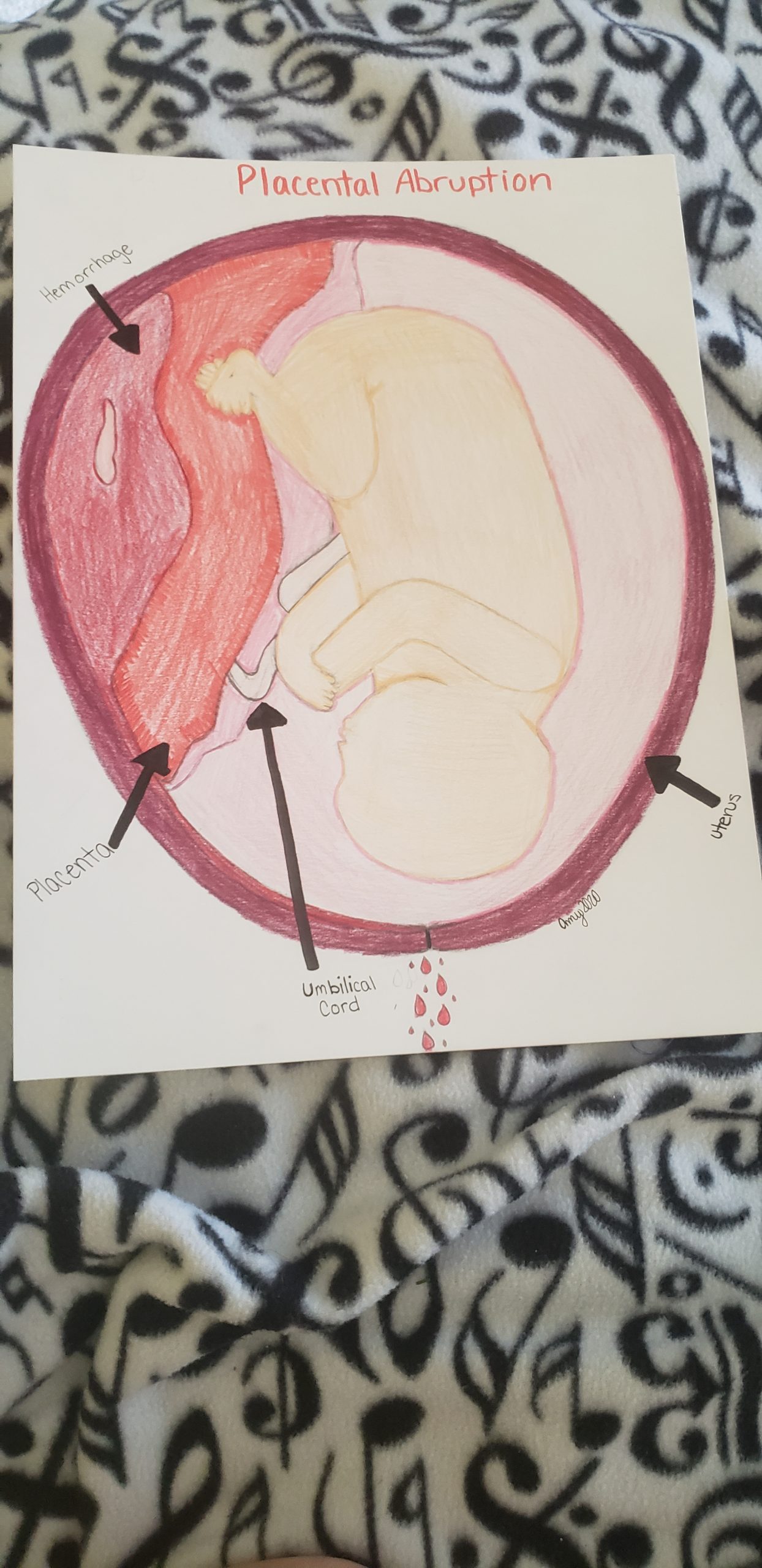I created a drawing of a Placental Abruption for my STEAM Project. In the photo attached, you can see where the placenta has detached from the uterus and see the hemorrhage it created as well as see where the blood leaves the mother when the hemorrhage is able to grow larger and exit the body.
The hemorrhage that comes from the placenta detaching from the uterus can be harmful to both the mother and the baby. The baby will no longer receive nutrients through the umbilical cord, as well as the detachment of the placenta can cause the baby to lose oxygen which is also vital to the baby’s survival. The mother, however, will feel some lower back pain, experience some belly pain and as I depicted in my drawing some bleeding however not every mother may experience bleeding as the detachment may be large enough to cause some internal bleeding in the uterus but not fully leak out the vagina. Placental abruptions typically occur within the last twelve weeks of pregnancy. Depending on the severity and the proximity to the due date, the mother may be sent home to be on bed rest or kept in the hospital on bed rest. The other option is the delivery of the fetus via C-Section to stop the hemorrhage.


I had to review Amelia Dell’s steam project on placental abruption, she drew a drawing of a baby and the placenta showing the uterus, hemorrhage, and the umbilical cord. Placental abruption is when the uterus detaches itself and creates a hemorrhage in the area causing the placenta to bleed. The hemorrhage can get larger overtime and be harmful to both baby and mother. This can usually happen the last twelve weeks of pregnancy in women. This also can cause problems with the baby receiving nutrients through the umbilical cord where they will no longer receive them, detachment of the placenta can then cause the baby to be deprive of oxygen resulting in baby’s survival. The symptoms the mother may experience is lower back pain, belly pain, and some may experience internal bleeding in the uterus depending on the size of the hemorrhage. Depending on how bad the hemorrhage is the mother may have to be kept in the hospital or on bed rest for the remaining of their pregnancy. Another option could be having the baby through a via C-section to stop the hemorrhaging. Amelia’s drawing shows how the walls of the uterus and the hemorrhaging that’s happening behind the placenta that detaches itself from the uterine wall with out an explanation to why this happens. Placental abruptions occur with out much of a warning. In the beginning of your pregnancy you may have a placental abruption and not even know about it. I found it to be interesting to learn that their are no causes for why placental abruptions happen.